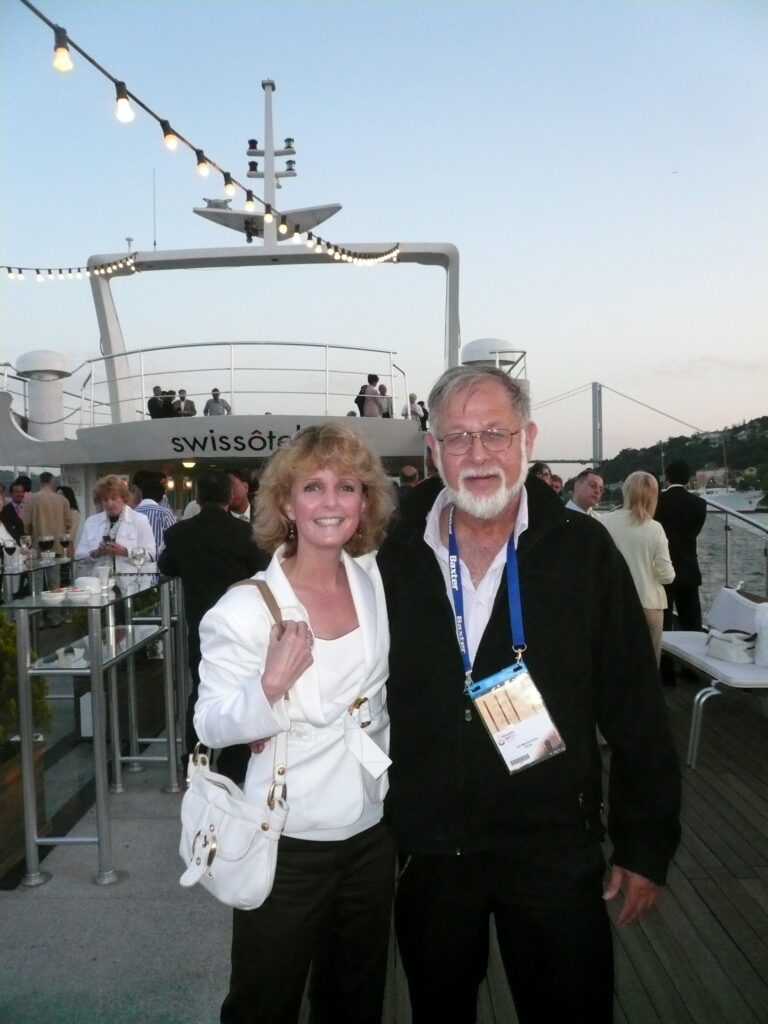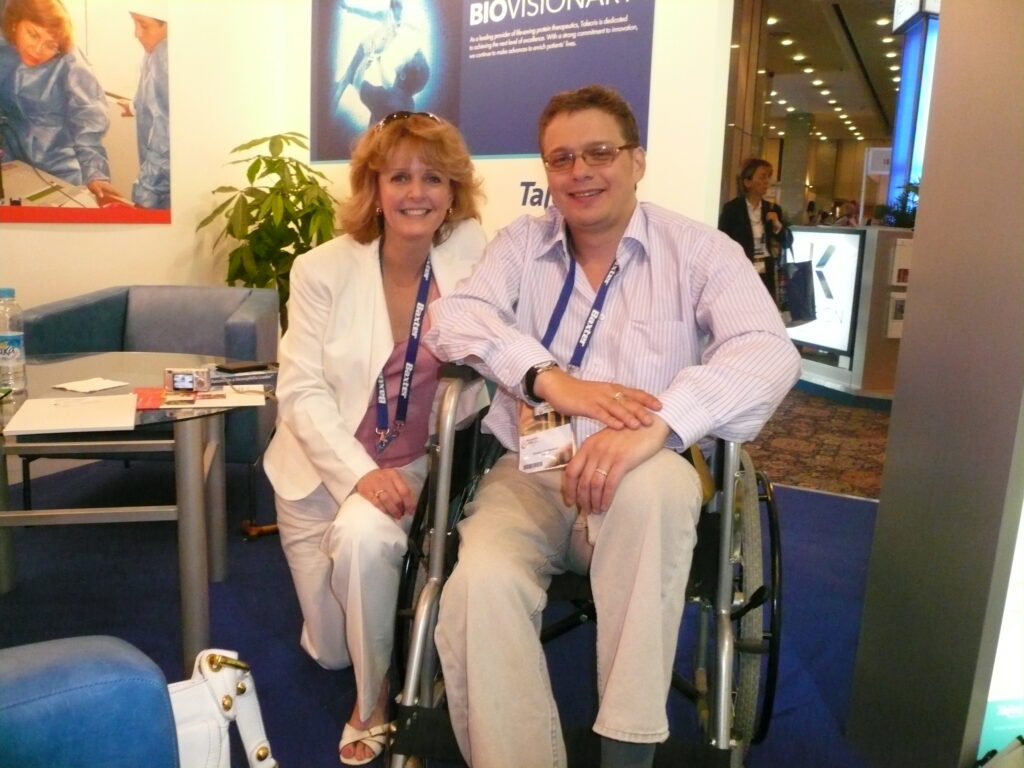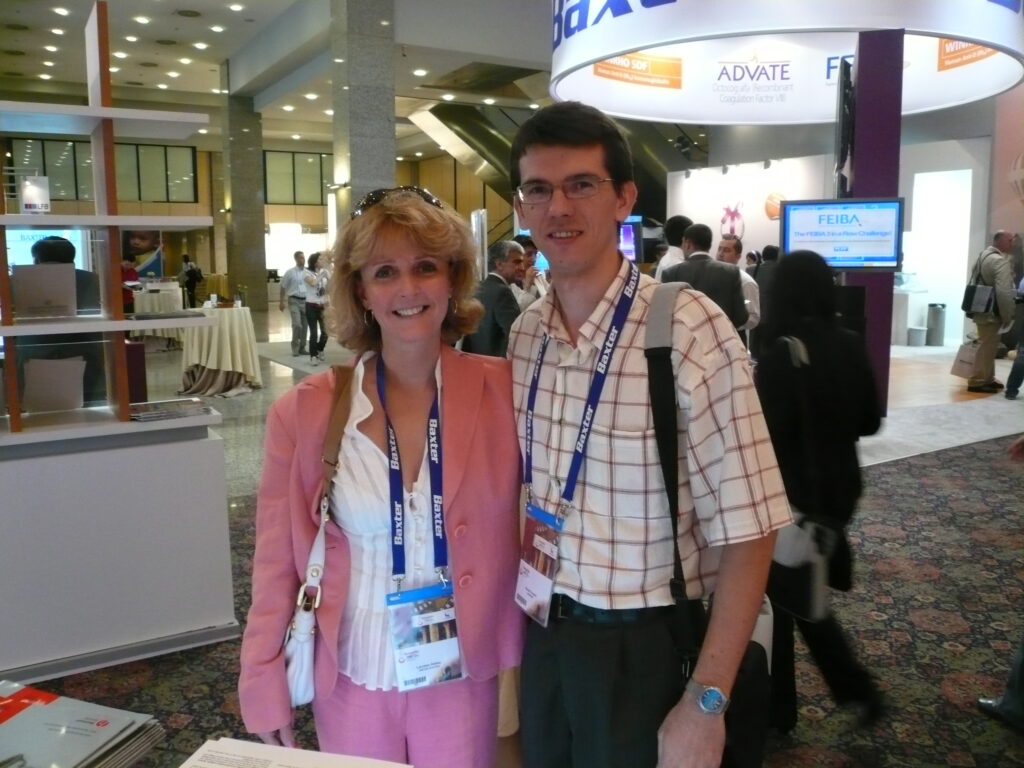
The World Federation Congress in Istanbul has been both spectacular and exhausting! With over 4,200 in attendance from over 100 countries, delegates represent developed and developing countries, different ethnicities, races and religions, and are patients, patient groups, doctors, treatment centers, researchers, pharmaceutical manufacturers and distributors.
Each day opens with a plenary session, and then there are lectures and presentations on either a medical/scientific track, or a multidisciplinary track. The multidisciplinary track includes psychosocial, patient organization or individual perspectives. I’ve a great interest in inhibitors now, as I am writing a book on them, but was unable to get to the inhibitor presentations. (I’ll be attending the Inhibitor Summit in Denver in July and will report from there) I find myself most interested in the patient organization challenges and the presentations representing a patient perspective, as this is where a lot of my work is focused. For example, my friend and colleague, Maria Andrea Belen, a mother from Argentina and also the Cordoba Chapter president, gave a wonderful presentation on the perspective of siblings (I am going to print it in an upcoming issue of PEN). I recall when I first met M. Andrea in 2000, at the WFH meeting in Montreal. She had come on her own, was a bit overwhelmed, but wanted to do something for the families in her corner of Argentina, which she felt was neglected. And now, look at her: eight years later she is reputed to have the strongest chapter in Argentina and is presenting papers at the WFH! This is empowerment in action; leadership manifested.
The theme of this Congress is “Treatment for All.” This is a good vision, but we are a far cry from that. I met individually with representatives from Pakistan, Nepal, India, Sri Lanka, the Dominican Republic, Romania, Ethiopia, and Zimbabwe. Challenges with access to factor continue, ranging from countries like India, which can mobilize financing to pay for some imported factor, to countries like Ethiopia, which has nothing. And Zimbabwe? If you’ve read my blog, then you know what it is like there. In Romania, the government has shown great progress and is buying more factor, but it still needs to be better distributed to the areas beyond the major cities. And Pakistan has made tremendous progress but educating patients remains a high priority.
You can see the huge disparity in priorities by reading what was printed in Hemophilia Daily, the Congress daily publication. From a representative from Ecuador: “Poverty. There are big differences from country to country, but in the end it boils down to money. Even if you convince your government that hemophilia is important and they need to provide supplies for patients, it still might not be possible.” Then from Germany: “At least in Europe, the main obstacle is still the availability of prophylaxis for everyone.”
Still, in all the many years I’ve been attending these Congresses, I have to say that I see overall improvement. These Congresses at once make you wince at the millions of pharmaceutical dollars spent on travel, entertainment and marketing props that will only be useful for a few days, and yet you have to balance this with knowing that people are networking, brainstorming, strategizing. I witnessed wonderful connections being made that might never have taken place, with promises to help those in need. Now often when we return home, life resumes and the goodwill starts to fade fast as we get distracted with our daily lives, but there are a select few who will continue to follow through on promises.
One such miracle took place on the last day. I had just wrapped up a meeting with Tendayi Mamvura of Zimbabwe, mother of two boys with hemophilia and volunteer with the Zimbabwe Haemophilia Association. I had just seen her in December, of course, and have known her for years. I’ve been trying for a long time to get the international hemophilia community to do something to aid Zimbabwe, which basically receives help only from our company. And I think I’ve been the only person from the hemophilia community to visit the country since 2000! As we finished up our meeting, Jan Bult, president of the Plasma Protein Therapeutics Association, a nonprofit based in Washington DC, introduced himself to me. We had been hoping to meet at the Congress. When I introduced Tendayi to him, as she was getting ready to leave, he struck up a quick conversation with her, and, taken with what we told him about the utter lack of care and hematologists in Zimbabwe, suddenly invited her to the June 17th meeting–where she will be able to address 300 people working in this international community. She looked stunned and accepted; I couldn’t have been happier. At long last, perhaps now maybe we can get real aid and resources to long-suffering Zimbabwe! (Where aid agencies are now being targeted as acting illegally against President Mugabe)
I regret I didn’t get to see Kiss Lazlo, the Romanian father who biked for two weeks to attend the Congress from Romania, and to raise awareness of hemophilia by interviewing with media along the way. He made it, sore but happy, but with the huge crowd it was easy to miss certain people.
With so many people in attendance it was lively and crowded, exciting and draining. The pharmaceutical companies have their massive booths with plenty of educational material. The WFH had a splendid resource center where we could walk in a retrieve dozens of educational booklets on a variety of relevant topics. There seemed to be fewer patient organizations with booths, although I met the lovely guys from the Irish Haemophilia Society and strolled by the Algerian, New Zealand and Iranian Hemophilia Society booths.
And there are social events: industry has their own exclusive, invitation-only events, but there are also general events such as the cultural event Tuesday night at the Topkapi Palace, and the final night event at the Hilton. I had a ticket to it and never have missed one, but a bad headache laid me low, and I missed out on it last night.
Today was the general assembly, in which the national member organizations elect new leadership. Mark Skinner, former NHF president, person with hemophilia and current president of the WFH is up for re-election. I’ll post the results as soon as I hear. Good luck, Mark!
Thanks to the WFH for a remarkable Congress, really one of the best ever. The amount of coordination that must go into one of these events is almost incomprehensible, but the WFH staff and event planners make it look routine. Thanks also to industry for sponsoring travel for so many, and for providing food and drink and entertainment. And thanks to the Turkish Hemophilia Society for hosting this amazing event. We will all continue to work harder than ever to make treatment for all.
I am here till Monday, and will post a few photos of my tour. I haven’t seen anything of Istanbul till today. A city of 15 million, it is the only city on earth that straddles two continents!
See all the photos from the Congress here.
Check in tomorrow…
(Photos from top: With Dmitry Chistyakov, president of the St. Petersburg Hemophilia Society (Russia); With Dr. Uri Martinowiz, chief hematologist of Israel; With Daniel from Romania)




1 thought on ““Merhaba” from Istanbul”
what a trip! Looking forward to reading that presentation in PEN.. And what a great opportunity for the Zimbabwe community! Here’s hoping that the extra publicity and attention will help.